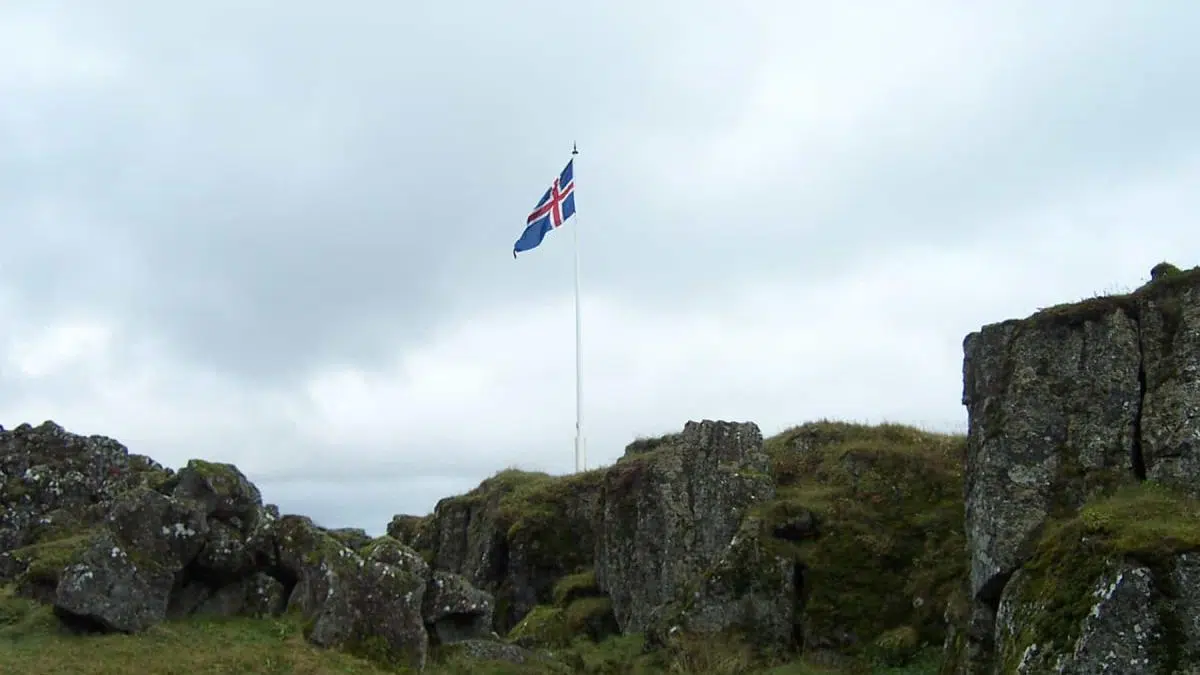Free and exclusive discount codes for hundreds of tours and & travel services in Iceland
Subscribe to instantly receive discount codes for tours, car rental, camper van rental, and outdoor clothing rental.Thank you! ❤️
Jon Heidar, Editor of Stuck in Iceland Travel Magazine
Thingvellir (Parliament Plains) is without a doubt the most interesting historic site in Iceland. It is right on the popular Golden Circle route.
Hallowed Ground of the Icelanders
To Icelanders, it is hallowed ground where our forbears founded a parliament and a commonwealth back in 930. It was a site of national revival in the nineteenth and twentieth century. Iceland was declared a free and independent republic in 1944 in Thingvellir and now it is a national park. Cue the Icelandic national anthem and wipe that tear from your eye discreetly.
The Ultimate Viking Party
During Viking times and in the early middle ages it seems to have been a pretty fun place during those 2-to 3 weeks when the parliament was in session. Of course, the parliament dealt with serious issues, for example, disputes between chieftains and their followers. It was just as much a judicial body as a legislative body. Interestingly, Icelanders did not have executive power until 1262 when they finally submitted to the Norwegian king. If somebody was found guilty of something the punishment had to be enforced by those who filed the grievance. This is much admired by many but this was probably what was the undoing of the commonwealth. Without centralized executive power to hold them in check, the chieftains fought and intrigued against each other for decades like rats in a sack until exhausted or dead.
So where did we put the holy grail again?
One of those chieftains was the famous poet and politician Snorri Sturluson. There is a mysterious entry in the history of him arriving at the parliament in Thingvellir in 1217 with 80 armored men “from the east” with no real explanation of their purpose. This passage has helped to convince some that the holy grail was hidden in the Icelandic highlands by Templar knights and Snorri was recruited by them to facilitate this. This sounds a bit far-fetched, to say the least but admittedly it is a fun theory. There is actually an Italian scholar who is actively searching for the holy grail in Iceland. I have no further comment!

Let´s get out of this hole and meet new people
But I digress. When the parliament was in session in the high summer during the first centuries of its existence each year Thingvellir turned into a carnival where people from all over the country would dance, drink, trade, gossip eat and be merry in every way. Except of course when they were fighting. Many young people would find their life partners at this gathering. It is well documented that people would do whatever they could to get to Thingvellir and to the 13 regional parliaments which were held during spring and autumn. After all, Iceland was a rural society with bad communications where you spend long winters holed up with just a few familiar faces. Meeting new people and getting drunk with them was just the ticket.
17 days long trip to go to the party of the year? No problem
Never mind you had to spend up to 17 days traveling on horseback or on foot to get to the festivities. To be fair, the travel time to Thingvellir varied and for some, it was just an easy jaunt of 1 – 2 days. This venue for the highest parliament in the land was selected to be central as possible. Its southern location ensured good weather. The river running next to it was diverted for easy access to fresh water and the fields were perfect for camping and grazing horses.

The decline and dreariness of Thingvellir
But times changed and over time Thingvellir lost its relevance. In 1000 AD Icelanders converted to Christianity after it almost came to a fight between pagans and Christians when Althingi was in session. The deal was you could still worship the old Norse gods if you did so in secret. In 1262 Iceland finally submitted to the Norwegian king and this seems to have ushered in a period of economic growth and peace. However, it made the Thingvellir parliament redundant as a governing body. In the middle of the 16th century, the reformation swept Iceland, and with it came harsh laws on morality. Or, let’s be honest here, the rich patriarchs clamped down on poor young people, especially women. Thingvellir retained its place as a place of judgment but it is safe to say that nobody but the worst sadist was having any fun.

Sharpen that ax. Or not
When the executive power was introduced to Iceland it also ushered the novelty of the public execution and corporal punishments. There were four kinds of executions: death by drowning which was usually reserved for women found guilty of “loose morals”, hanging was for thieves, beheading (by a blunt ax wielded by a drunk and often reluctant amateur) for murderers and male adulterers, and death by burning for convicted practitioners of magic. The most popular form of corporal punishment was lashing, branding, cutting off a limb/fingers, or bruising. Thingvellir´s main role was in later centuries to be a place of judgment and harsh punishment until it was disbanded in 1800.

The pool of shame and sorrow
There were 70 – 80 executions in Thingvellir from the 17th century onwards. Of those, there are recorded 15 hangings, 30 beheadings, and 18 women who were drowned in the so-called “Drowning Pool” which was where the bridge across the river is now. It is the only place of execution which is marked by a memorial plaque but there are also places at Thingvellir with self-explanatory names such as Gallows Rock (Gálgaklettur), Scaffold beach (Gálgaeyri), and Burning gap (Brennugjá). The treatment of the innocent and often abused women executed at Thingvellir is truly a stain on Icelandic history.
So where is all that history?
Today there is not much physical evidence of the over 1100 years of history of Thingvellir. Even the drowning pool itself was largely ruined when a bridge was built over it. I say good riddance! The exception is the remains of turf huts. The huts that are visible now are probably no older than two centuries old. Most of them are built on top of older ones. But the waterfall which was created when the pioneers diverted the river is both visible and impressive to look at. And on it rumbles mournfully close to the pool where all those women were forced into large woolen bags and pushed underwater until they moved no more.
How to get there
From Reykjavik go out on Highway 1 past the town of Mosfellsbaer. Turn right on road 36. The drive will take about 30 – 40 minutes.
Written by Jón Heiðar Þorsteinsson




